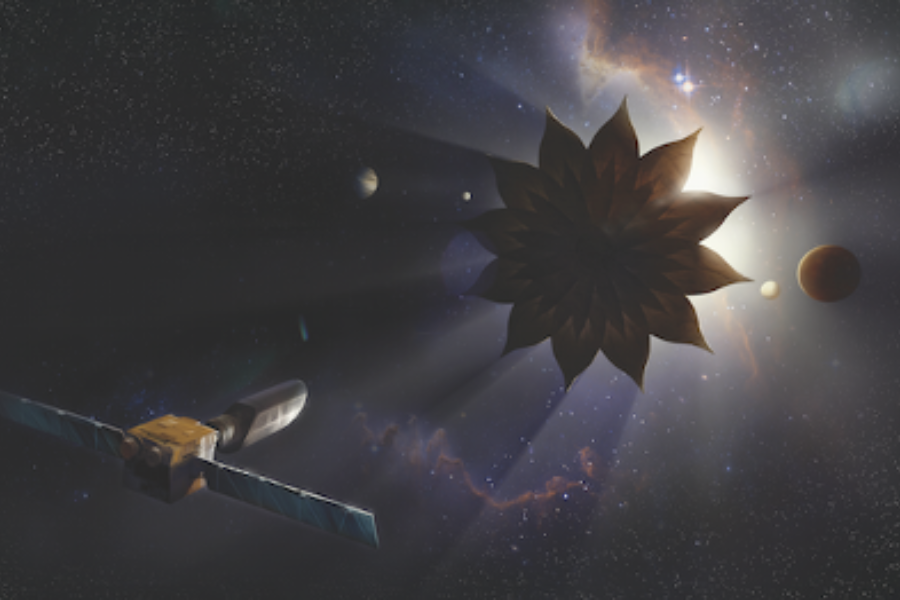
 Margaret Bruna, an iREx student at McGill University, finished her master degree in 2022. Here, she summarizes the research project she carried out during her studies:
Margaret Bruna, an iREx student at McGill University, finished her master degree in 2022. Here, she summarizes the research project she carried out during her studies:
During my Master’s degree, I worked on improving the efficiency of future telescopes that will look for exoplanets like the Habitable Exoplanet Observatory (HabEx) and the Large Ultra-Violet Optical Infrared Surveyor (LUVOIR). These are predicted to launch in the 2040’s, and are designed to be the best way to observe Earth-like planets orbiting Sun-like stars.

Artist’s rendering of a telescope capable of directly imaging exoplanets in visible light. Credit: James Wong.
These telescopes will be able to detect planets using a technique called direct imaging, which involves literally taking a picture of the planet! Because planets are much smaller and much dimmer than their host stars, direct imaging is a very difficult technological feat. Current direct imaging is primarily done from ground-based telescopes operating in infrared light, because planets are typically much brighter in this regime. So far these have been blind to Earth-twins, since they are too small and dim for our current technology to resolve them.
HabEx and LUVOIR will operate in space and are being designed to directly image planets in visible light, with the required resolution to image Earth-twins. During my degree, I learned about how current direct imaging works, and how these future missions are being designed. Direct imaging is the only way to actually see an exoplanet. With each image the position of a planet is measured at a given time. This is extremely useful, because having more direct images helps to constrain the planets orbital path. Knowing a planet’s orbit is very important, since it is one of the best ways to determine whether a planet is habitable or not.
My research has shown that imaging planets in visible light rather than infrared can help us constrain a planet’s orbit more accurately and more efficiently. Since infrared light measures inherent heat, it does not change as a planet orbits around its host star. Visible light, however, measures the amount of light from the star being reflected off the planet, and so it exhibits changing phases over the course of an orbit. My research shows this additional time-dependent phase information allows for planet characterization with fewer direct images, and that using visible light improves the accuracy of orbit determination compared to using infrared.
In short, during my Master’s degree I learned as much as I could about directly imaging exoplanets. With my research I was able to show that future space-based missions can reduce the number of images required to properly characterize a planet and improve accuracy by using phase variations. This can help these missions save on both time and resources.
Margaret completed her MSc at McGill between 2021 and 2023, under the supervision of Prof. Nicolas Cowan. Her thesis will be available soon.
You must be logged in to post a comment.